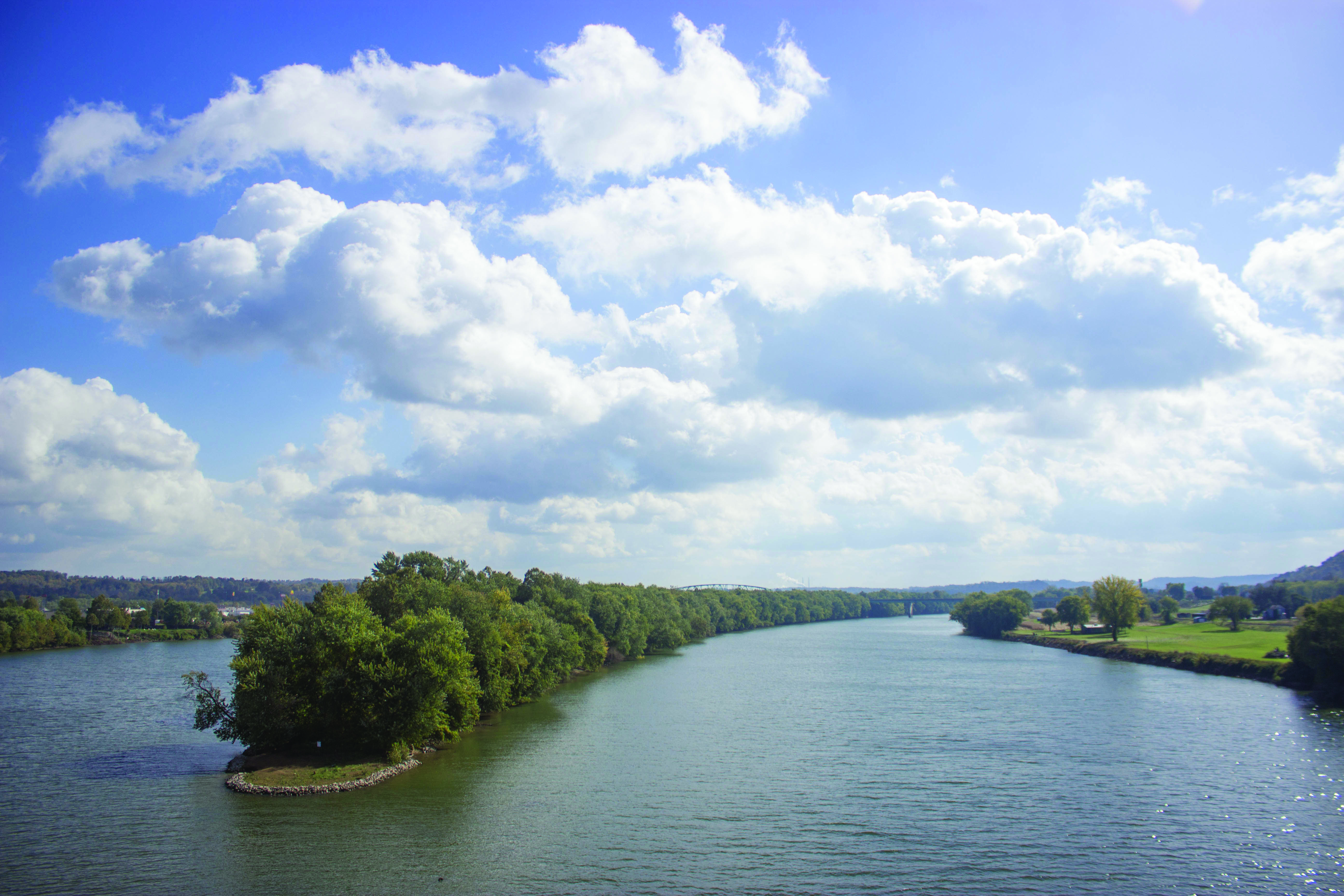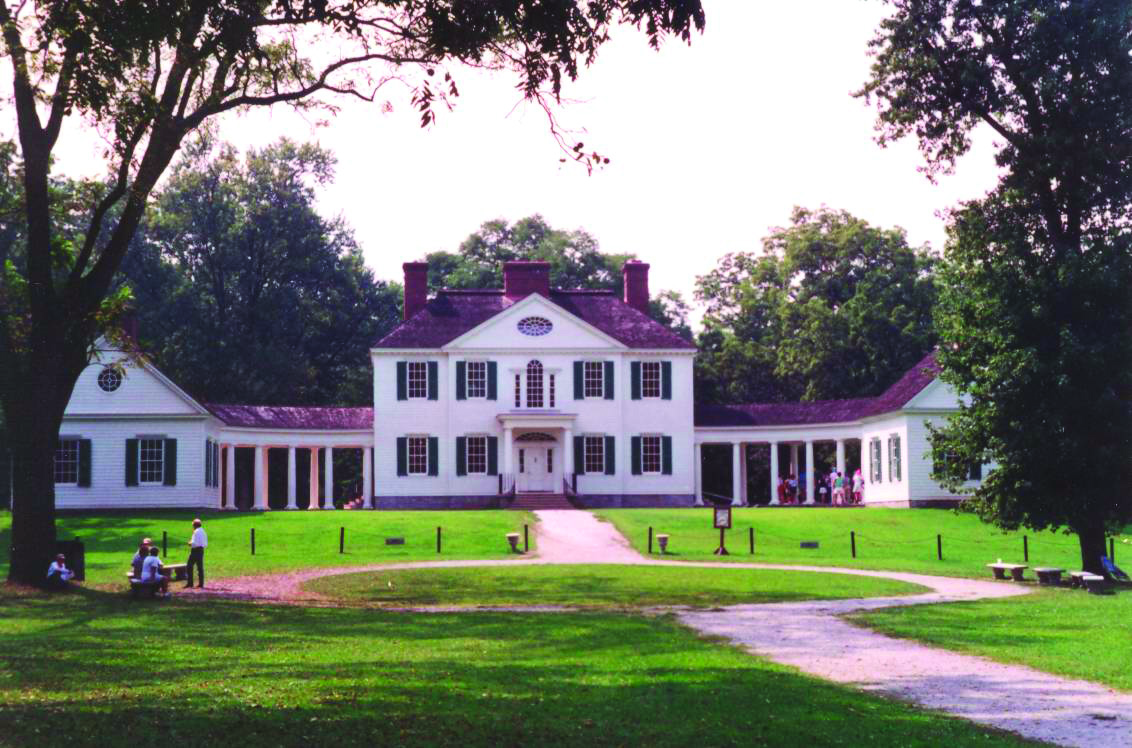
Blennerassett Mansion and parts of the U.S. Fish & Wildlife Refuge reside on the Ohio River islands near Belpre and Marietta.
To a visitor driving on State Route 7 along the Ohio River, the five tree-covered islands separating the Parkersburg and Marietta areas might inspire a moment of curiosity, and maybe even a quick Google search.
Even local residents might have trouble explaining what Buckley, Neal, Muskingum, Blennerhassett and Vienna Islands offer.
“They don’t even know they are there, let alone how they would get there,” Dr. Ray Swick, historian at Blennerhassett Museum, says with a laugh.
Islands of Refuge
Buckley, Neal and Muskingum are just three of 22 islands that are a part of the Ohio River Islands National Wildlife Refuge, which is managed by the U.S. Fish & Wildlife Service. The refuge system’s mission is to protect wildlife habitats and preserve natural resources for future generations. It also serves as natural habitats for all kinds of wildlife.
Matthew Magruder, the visitor services manager at the Fish & Wildlife Service center in Williamstown, West Virginia, says migratory birds and freshwater mussels both rely on the refuge’s physical offerings.
The islands function as nature’s version of a rest stop for the birds as they travel thousands of miles across the United States every year. “If we don’t have as many [islands] as we do then those gaps get longer and longer and it makes it more difficult to make that trip,” Magruder says.
But mussels are the islands’ year-round residents, and living in the river along the islands are over 40 different species of freshwater mussels, six of which are endangered. The mussels are essential to the river’s ecosystem, as they help clean it. The tiny mollusks reduce sediment, silt and pollutant buildup by filtering water and digesting plankton—thus maintaining proper levels of the organism.
The islands are also a habitat for another animal—humans. They are a site for the outdoorsmen and women to enjoy. Every day, between an hour before the sunrise and an hour after it sets, the islands, which are only accessible by boat, are open to visitors. During these daylight hours, visitors can hike, swim, fish and hunt with proper permits, take photos and generally explore, so long as it is not destructive.
The Blennerhassett Sanctuary
The history of these islands is as rich as its soil, and for the 200 years prior to the islands joining the refuge system in the 1990s, their list of owners and uses regularly changed. However, the 381-acre Blennerhassett is certainly the most storied.
The island features Blennerhassett Mansion, a reconstruction of the former home of Harman and Margaret Blennerhassett. It is known for its extravagance and accompanying scandal.
The story goes that in 1796, the Blennerhassetts arrived in Pittsburgh from Ireland to start a new life in America. With plenty of money in their pockets, they had their eyes set on settling in Tennessee, the Union’s newest state.
Before long, the two became aware of the brutal reality that was the American West, contrary to what they had been told was full of “Gardens of Eden.” Rather than settling in Tennessee, the family decided to plant their roots in the upper Ohio River Valley.
In 1797, they arrived in Marietta to live along the Ohio River. “It one was one of the great rivers in the world,” Swick says. “[Thomas] Jefferson said it was one of the most beautiful rivers in the universe. The land was extremely fertile and the most fertile lands were on the [river] islands.”
In 1798, the Blennerhassetts purchased 169 acres of Belpre Island, and by September of 1800, their mansion was completed.
Standing behind meticulously manicured lawns and gardens was a 12-room, white mansion that contained about 7,000 square-feet of living space. Trees were cleared in the front lawn of the home so passersby on the river could see the impressive Palladian-style home well from afar. The Blennerhassetts wanted to make an impression.
But the family’s stay in their home was short-lived, after they were accused of supporting former vice president Aaron Burr’s conspiracy to form an army in the west, a treason against his own nation.
Blennerhassett offered Burr financial support and his own home as a base of operations, and with militia coming to the island, the family deserted their homestead in 1807.
In March 1811, the island was under the ownership of Thomas Neale, who farmed hemp on the land and used the mansion to store around 20 tons of his crop.
It is said that his slaves started a fire for warmth in his cellar, and the fire spread to the hemp and, eventually, it burned down the house. Historians like Swick note the event as curious, given the slaves had means to start fires for warmth in their quarters.
The single-family ownership of the island lasted just more than a decade. After the house’s destruction, the island was divided into five farms and rented out for the next century. DuPont purchased the island in 1966, for water and aquifer purposes in its plastic manufacturing.
To this day, the whole island is still owned by DuPont, and the mansion site is leased to the state of West Virginia.
Mansion Rebuild
Swick credits American bicentennial fever that was sweeping the nation in the 1970s for the idea of reconstructing the mansion and making a state park out of the island. “The federal government was just
shoving money at localities,” he says.
And Blennerhassett was considered one of the most significant cites in the region’s history. Between 1973 and 1974, state archaeologists dug up the mansion’s ruins and uncovered its foundation stones.
In 1980, the island opened up as a state park, similar to today’s refuge islands. Besides natural sites, the visitors could see the foundation stones. In 1984, reconstruction of the mansion began, and on July 4, 1991, the rebuilt Blennerhassett mansion was opened to the public.
With the foundation stones uncovered, architects knew the dimensions of the house’s ground floor. A journal from a visitor tipped them off that the room layout on the second floor mirrored the ground floor. Those clues provided a solid start for a rebuild, but it was travelers’ accounts, court records and the Blennerhassetts’ own writings that filled in most of the remaining holes.
For example, architects knew how many windows were in the house and their sizes because they have records from when Harman was purchasing windows for the house. “Blennerhassett has the best recorded history of any island in the river,” Swick says. Anyone associated with it always recorded plenty of information.
For Swick and the rest of the staff that were involved in the rebuild, those records were like a mosaic. Eventually, they got enough information for a whole picture.
The front three rooms of the main part of the house are the most accurately reconstructed rooms. To the right of the main entry room is the lower drawing room, with polished black walnut panels from floor to ceiling. But while there is still a lot known about the rooms, there are still unknowns.
Upon entering the house, the wide, spacious and curved staircase to the second floor grab attention on the right side of the room. Swick says that the museum staff still is not sure exactly where the original stairs were. “There are still mysteries that this house has not given up,” he says.
The house is not all brand new. Along with the original foundation stones, the house holds 15 original artifacts. Three alabaster pieces that were found in Akron, Ohio, and a piano that was found in Gallipolis are also a part of the museum. When the Blennerhassetts deserted the mansion, they could take few possessions with them. Months after their departure, their belongings were auctioned off and scattered hundreds of miles.
All said and done, the mansion reconstruction cost almost $1 million.
Like the refuge islands, Blennerhassett is accessed only by boat. The difference is that visitors must purchase a ferry ride on a sternwheeler to reach the island. On the island, guests can tour the house, rent bicycles, take a horse-drawn carriage ride around the island, visit the gift shop and have a picnic under shelters.
Today, the island draws over 50,000 visitors annually. Swick believes the island continues to draw in visitors because of its unique story, which he calls a microcosm of American history. Though it is most known for the period that the Blennerhassetts inhabited the island, much more has happened on the little strip of land. Native Americans inhabited the island up to 13,000 years ago. Civil War incidents occurred on the island, as did bootlegging wars. “There was excitement at all times,” Swick says. “Whatever was going on in the rest of the nation, you will find examples [on Blennerhassett].”
“You drive past them, you see them, but you don’t really think about what is possible to do out there,” Swick says.
While our country’s history constantly shifts, the islands continue residing in the Ohio River, unmoving and constant. Sometimes those traits escape our notice.
In this case, you just have to look.
